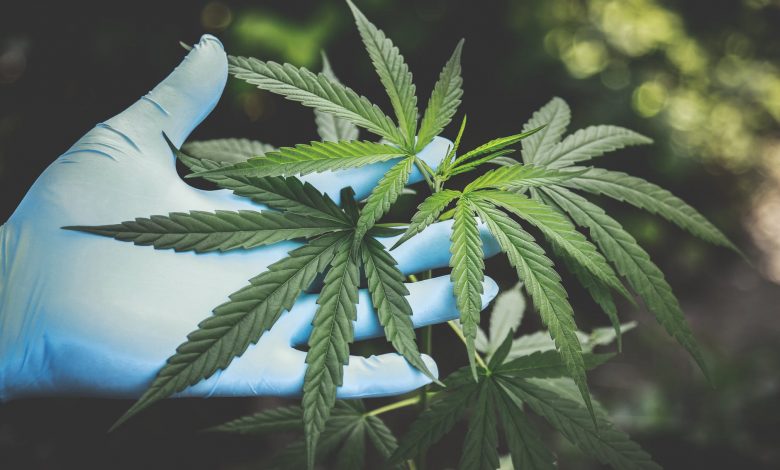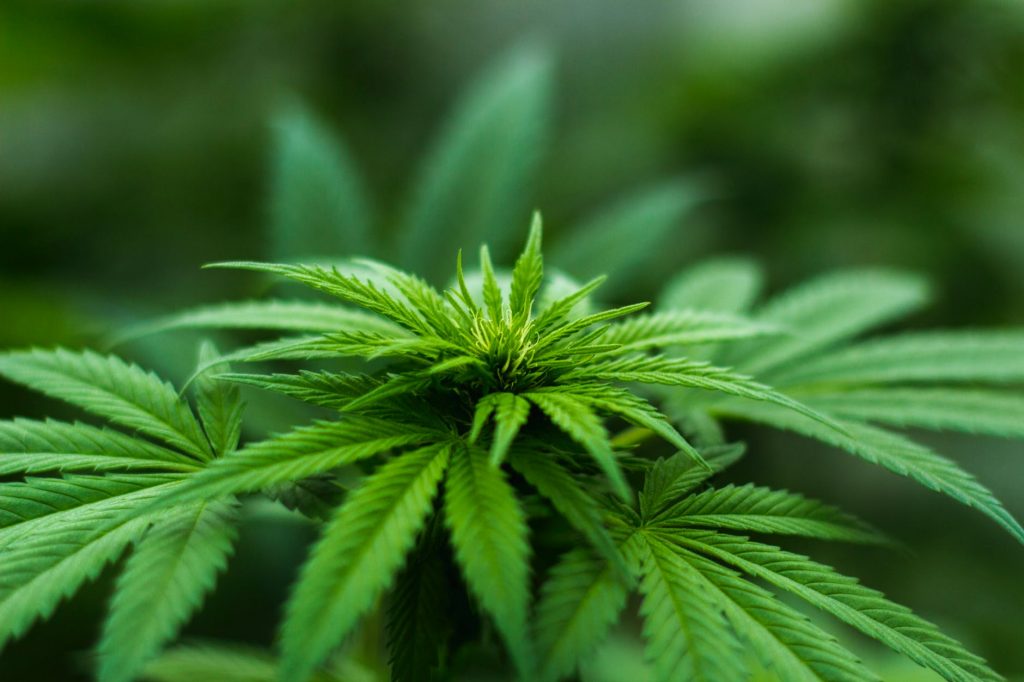Marijuana Laws: The Past, the Present, and the Future

Despite a culture surrounding marijuana that seems to become more liberal every day, it is still a crime in most states, and arrests for marijuana are still being made often. Of the 1,654,282 drug abuse arrests in 2018, the number one reason for arrests, nearly 37 percent, was for possession of marijuana. With legal marijuana in 11 states and legal medical marijuana in 33, a good portion of the US has essential laws regarding the drug that differ greatly from federal law. It can be difficult to bridge the gap here, and the highest law of the land still has it outlawed. Laws have changed drastically over the years, but rather quickly in the last decade, and the future seems to be able to go in either direction, but has potential to be influenced by a Democratic president in 2020. It’s essential to be aware of what the history of marijuana laws looks like, what the current laws are, what the regulations are even in states where it is legal, and what the future looks like.

History of Marijuana Laws
Before around 1910, many Americans used marijuana in limits for its medicinal values, often treating symptoms like nausea, stomach pain, migraines, inflammation, insomnia, and more. However, the drug became associated with Mexicans who were crossing the border starting in this decade, which was causing fear and unrest among Americans fearing for their jobs. This prejudice partially prompted the passage of laws among the state making marijuana illegal, and the federal government followed behind in 1937 with the Marihuana Tax Act of 1937 – yes, that’s how it was spelled then, which placed regulations on the production, distribution, possession, importation, cultivation, and use of the drug. However, this didn’t outright criminalize it; that happened with the Controlled Substances Act of 1970. This contrasted against the drug fervor that was encompassing the 70s, and thus, softening the states’ laws on marijuana, leading many to pass legislation to decriminalize or lessen the laws surrounding the drug. In the years since then, 26 states have now decriminalized smaller marijuana possessions, meaning that it’s handled on a local, more civil level, not state, and often doesn’t result in jail time. Though specific laws will vary, these states include:
- Alaska
- California
- Colorado
- Connecticut
- Delaware
- Hawaii
- Illinois
- Maine
- Maryland
- Massachusetts
- Minnesota
- Mississippi
- Missouri
- Nebraska
- Nevada
- New Hampshire
- New Mexico
- New York
- North Carolina
- North Dakota
- Ohio
- Oregon
- Rhode Island
- Vermont
- Washington
- Washington D.C.
Just 26 years after that, California became the first state to legalize medical marijuana. Other states followed haste, and a steady stream of states have been passing their own medical marijuana laws. Currently, the following states have legalized medical marijuana:
- Alaska
- Arizona
- Arkansas
- California
- Colorado
- Connecticut
- Delaware
- Florida
- Hawaii
- Illinois
- Louisiana
- Maine
- Maryland
- Massachusetts
- Michigan
- Minnesota
- Missouri
- Montana
- Nevada
- New Hampshire
- New Jersey
- New Mexico
- New York
- North Dakota
- Ohio
- Oklahoma
- Oregon
- Pennsylvania
- Rhode Island
- Utah
- Vermont
- Washington
- Washington D.C.
- West Virginia
The states that haven’t legalized marijuana have at least legalized the use of cannabidiol (CBD). As far as laws to allow for recreational use as well, these states have taken the lead:
- Alaska
- California
- Colorado
- Illinois
- Maine
- Massachusetts
- Michigan
- Nevada
- Oregon
- Vermont
- Washington
- Washington D.C.
It began with Colorado and Washington in 2012, followed by a slightly slower trickle since then. The most recent at the time of this article to legalize the drug completely was Illinois, beginning legal sales on January 1, 2020.
We also saw differences in enforcement among different political administrations. While the Obama administration encouraged federal prosecutors not to pursue medical marijuana violations in states that it was legal and deferred its right to interfere with the states’ laws when California and Washington legalized the drug entirely (the Cole Memo), the Attorney General for Trump’s administration reversed these decisions.
Where the State and Federal Governments Differ
Obviously, over half of the states in the country believe in the medicinal value of marijuana. However, the federal government sees this in a quite different light. Marijuana is still labeled as a Schedule 1 drug, with the worst of the worst – heroin, LSD, ecstasy, quaaludes, and peyote. These drugs are all deemed to be highly addictive with no real medical use. Technically, the federal government reserves the right to prosecute for federal law violations even in states where it’s legal.

Current Marijuana Laws
Federal Laws
Current federal marijuana law is currently governed under the Controlled Substances Act. The first thing this law did was establish the drugs into different levels, called schedules. Schedule 1, as mentioned earlier, are the most severe drugs, and Schedule 5 drugs are the least severe. They’re sorted by the following criteria:
- Schedule 1: High potential of abuse, no accepted medical use in the US, and lacks accepted safety under medical supervision.
-Heroin
-LSD
-Marijuana
-Ecstasy
-Quaaludes
-Peyote - Schedule 2: High potential of abuse, has a currently accepted medical use in the US, and can lead to severe psychological or physical dependence.
-Vicodin
-Cocaine
-Meth
-Demerol
-OxyContin
-Fentanyl
-Adderall
-Ritalin - Schedule 3: Less potential of abuse, has a current medical use, and may lead to moderate psychological or physical dependence.
-Tylenol with Codeine
-Ketamine
-Steroids
-Testosterone - Schedule 4: Low potential of abuse, has a current medical use, and may lead to limited psychological or physical dependence.
-Xanax
-Valium
-Ambien
-Tramadol - Schedule 5: Low potential of abuse, medical use, may lead to less psychological or physical dependence.
-Robitussin
-Lomotil
-Motofen
-Parepectolin
As far as punishments go, it will vary based on what schedule the drug was in, how much was in their possession, whether they were distributing, and many other factors. Schedule 1 drugs will come with the worst punishments, decreasing down to Schedule 5. However, it is important to note that a larger possession of a Schedule 2 may result in a worse conviction that a smaller possession of a Schedule 1, and various other different results depending on circumstances.
Most of the time, a lesser, first-time marijuana conviction will result in a federal or state (if applicable) misdemeanor, but a second conviction can come with felony charges. Additionally, charges of distribution and others that rank above possession are more likely to be felony convictions. Other factors that may result in felony charges include where the violation occurred and whether it was in connection with another crime.

State Laws
Even in states with legal marijuana, it is possible to violate the law with marijuana use. States still regulate its use to those above the age of 21, how much they can have at one time, and where it can be used. It is also possible to be arrested for driving under the influence of marijuana in any state. Here’s a selection of a few state laws for reference, but you can see all of the state laws outlined here:
Alabama
First degree possession is possession for anything other than personal use, making it a Class C felony. It can also be a second possession charge, which is a Class D felony. These range from one to ten years in prison and a $15,000 fine.
Second degree possession is possession for personal use, a Class A misdemeanor. This lesser crime can come with a year in jail and a $6,000 fine.
Distribution of marijuana is a Class B felony, resulting in two to ten years in prison and a $30,000 fine. Selling to a minor is a Class A felony, with a much higher sentence of 10 to 99 years in prison and up to $60,000.
Trafficking is also a Class A felony, with the sentences depending on the amount, with the minimum punishments being:
- 1 kilo to 100 lbs.- three years and $25,000 fine
- 100-500 lbs.- five years and a $50,000 fine
- 500-1000 lbs.- 15 years and a $200,000 fine
- Over 1000 lbs.- life imprisonment without the possibility of parole
Georgia
Possession of an ounce or less of marijuana is a misdemeanor with up to a year and a $1,000 fine, as typical for misdemeanors. Between an ounce an ten pounds is a felony with one to ten years in prison.
Trafficking comes with these minimums:
- 10 lbs or less- one to ten years
- 10-2000 lbs.- five years and mandatory $100,000 fine
- 2000-10,000 lbs.- seven years and mandatory $250,000 fine
- Over 10,000 lbs.- fifteen years and mandatory $1,000,000 fine
Idaho
Possession of less than three ounces is a misdemeanor with a year and/or $1,000, while anything more is a felony charge with up to five years and $10,000. Any subsequent charge results in double these penalties.
Distribution is also a felony, coming with up to five years in prison and a $15,000 fine. These subsequent charges also result in double penalties.
Trafficking has the following laws:
- 1-5 lbs., 25-50 plants- mandatory one year and $5,000
- 5-25 lbs., 50-100 plants- mandatory three years and $10,000;
- 25-100 lbs., over 100 plants- mandatory five to fifteen years and $15,000 to $50,000
Indiana
Possession of under 30 grams is a Class A misdemeanor, while anything over that is a Class D felony. Regardless of the amount, subsequent offenses are Class D felonies.
When selling, less than ten pounds or selling to a minor is a Class D felony. Ten pounds or more or selling at or near a school property is a Class C felony.
Iowa
Iowa has the following laws on the sale of marijuana:
- Under 50 kg.- Class D felony with fine of $1,000 to $5,000
- 50 to 100 kg.- Class C felony with fine of $1,000 to $50,000
- 100 to 1000 kg..– Class B felony with fine of $5,000 to $100,000
- Over 1000 kg.- Class B felony with up to 50 years and $1,000,000
Kansas
A first possession charge will come with up to a year in prison and a $1,500 fine. Anything after that is a Level 5 felony, with 10 months to 42 months and up to $10,000, depending on the previous criminal record.
Selling less than 25 grams is a Level 4 felony, 25 to 450 is a Level 3, 450 grams to 30 kilograms is a Level 2, and anything more is a Level 1 felony. These penalties can range from 10 months to 17 years and up to $500,000. Growing marijuana will also result in felony charges.
Kentucky
Possession of less than five plants in Kentucky is a misdemeanor, but any more is a Class D felony. Selling less than eight ounces is a Class A misdemeanor, eight ounces to five pounds is a Class D felony, over five pounds is a Class C felony, and subsequent offenses raises it a class.
Texas
Four ounces is when possession becomes a felony here, with up to five pounds being a state jail felony, up to fifty pounds a Third Degree felony, up to 2,000 pounds a Second Degree felony, and over 2,000 pounds with 5 to 99 years in prison and $50,000. Selling to a minor under 17 or within drug-free zones will result in more extreme charges.
Virginia
A first conviction of possession will be a misdemeanor, and second-time convictions will usually only be a Class 1 misdemeanor.
Selling up to half an ounce is a misdemeanor, but half a pound to five pounds is a Class 5 felony with one to ten years in prison – a judge has the right to decrease this to a Class 1 misdemeanor, however. More than five pounds comes with 5 to 30 years.
Wisconsin
A first-time conviction of possession of marijuana will be a misdemeanor with less than six months in jail and up to a $1,000 fine. Anything after that is a Class I Felony.
Selling laws are:
- 4 plants, 200 g. or less- Class I felony
- 200 g. to 1 kg., 4 – 20 plants- Class H felony
- 1 to 2.5 kg., 20 – 50 plants– Class G felony
- 2.5 to 10 kg.- Class F felony
- Over 10 kg.- Class E felony
Any convictions after that or selling to a minor results in double the penalties.

Future of Marijuana Laws
As marijuana becomes more accepted throughout the states, many are opting to give expungements, seal records, present pardons, and a number of other ways to lessen the impact of a marijuana conviction for those who were convicted before laws changed. Most recently, Illinois is beginning to automatically expunge records with New York following closely behind, and the Washington governor is administering around 3,500 pardons, helping them avoid lawyer fees and court cases.
Other future laws are regarding hemp, the cannabis plant – but not necessarily even potentially marijuana, as Trump’s federal administration is considering regulations that may ruin crops after making the growth of the plant legal.
States that are making strides in legalizing the drug are Kansas, Mississippi, and Idaho, considering medical marijuana, and New York, New Mexico, Connecticut, Arizona, Oklahoma, Missouri, Montana, South Dakota, and New Jersey, who have already legalized it medically already.
As the US Drug Enforcement Agency (DEA) has announced that it will be beginning serious research into the medicinal value of marijuana, asking for over three million grams of the plant to be grown, there’s a possibility we’ll be seeing a change in federal laws in the future, depending on the findings of their studies. Perhaps, after marking its 50th birthday this year, the Controlled Substances Act will be reevaluated and updated concerning the recent developments regarding the drug. However, just four years ago, the DEA denied an action to reclassify the drug to a different schedule, so there’s no telling what the future may hold.
2020 Presidential Candidates on Marijuana Legislation
Trump’s administration has widely held a respect for states’ laws regarding marijuana, even though he reversed the Cole Memo, stating in a signing statement that “the Department of Justice may not use any funds made available under this Act to prevent implementation of medical marijuana laws by various States and territories.”
Of the 2020 Democratic candidates, a majority of them are in support of legalizing the drug in their presidential administration. These include:
- Bernie Sanders
- Elizabeth Warren
- Andrew Yang
- Pete Buttigieg
- Amy Klobuchar
- Tulsi Gabbard
- Tom Steyer
Sanders and Warrens plan on expunging all past marijuana convictions and calling for a drastic upheaval of the current federal drug laws. Sanders even goes so far as wanting to grant marijuana farmers ten million dollars for the expansion of growth of the plant. Klobuchar is a little more hands-off with her view here, mostly wanting to leave it to the states. However, Buttigieg wants to even sponsor the states, doubling funding to the ones that are changing their drug laws. Steyer plans for a referendum to let the people decide if they want to see a change in laws.
Contrastingly, Michael Bloomberg and John Dulaney both want to just leave it up to the states. And Joe Biden simply wants to decriminalize it at a federal level, but does not support its legalization, which isn’t a surprise, considering he has backed strong crime bills in his political history. He’s even recently called marijuana a gateway drug, though he’s since turned back from that statement.
Overall, it’s a pretty big toss up on what kind of reform may take place with our drug laws depending on the results of this election. It’s likely that it will either become more lenient, or stay about the same though, it seems.

Drug laws have varied greatly over the years, with not much consistency among the states and federal government. Even states that do have legal marijuana, there are still many laws outlining who can use it, when, where, and how much. While some states are getting more and more lenient, it seems the federal government isn’t budging much. However, it will be interesting to see where drug laws will lead with the next administration, as it can vary greatly based on who is in office.



